Heads up – Massive Sports Tech Holiday Deals List is Live!!! The Garmin Fenix 8 is $250 off (even the Fenix 8 Pro is $100 off!), the Apple Watch Ultra 3 is on sale, the Garmin inReach Mini 2 is $249, the GoPro Hero 13 Black, DJI NEO, and a ton of other brands/deals, including Wahoo, Oura, Whoop, Polar, Samsung, Google, and more than 100 sports tech deals here!
I’m DC RAINMAKER…

I swim, bike and run. Then, I come here and write about my adventures. It’s as simple as that. Most of the time. If you’re new around these parts, here’s the long version of my story.

You'll support the site, and get ad-free DCR! Plus, you'll be more awesome. Click above for all the details. Oh, and you can sign-up for the newsletter here!
Here’s how to save!
Wanna save some cash and support the site? These companies help support the site! With Backcountry.com or Competitive Cyclist with either the coupon code DCRAINMAKER for first time users saving 15% on applicable products.
You can also pick-up tons of gear at REI via these links, which is a long-time supporter as well:Alternatively, for everything else on the planet, simply buy your goods from Amazon via the link below and I get a tiny bit back as an Amazon Associate. No cost to you, easy as pie!
You can use the above link for any Amazon country and it (should) automatically redirect to your local Amazon site.
While I don't partner with many companies, there's a few that I love, and support the site. Full details!

Want to compare the features of each product, down to the nitty-gritty? No problem, the product comparison data is constantly updated with new products and new features added to old products!

Wanna create comparison chart graphs just like I do for GPS, heart rate, power meters and more? No problem, here's the platform I use - you can too!

Think my written reviews are deep? You should check out my videos. I take things to a whole new level of interactive depth!

Smart Trainers Buyers Guide: Looking at a smart trainer this winter? I cover all the units to buy (and avoid) for indoor training. The good, the bad, and the ugly.
-
Check out my weekly podcast - with DesFit, which is packed with both gadget and non-gadget goodness!

Get all your awesome DC Rainmaker gear here!
FAQ’s
I have built an extensive list of my most frequently asked questions. Below are the most popular.
- Do you have a privacy policy posted?
- Why haven’t you yet released a review for XYZ product you mentioned months ago?
- Will you test our product before release?
- Are you willing to review or test beta products?
- Which trainer should I buy?
- Which GPS watch should I buy?
- I’m headed to Paris – what do you recommend for training or sightseeing?
- I’m headed to Washington DC – what do you recommend for training?
- I’m from out of the country and will be visiting the US, what’s the best triathlon shop in city XYZ?
- What kind of camera do you use?
-
5 Easy Steps To The Site
In Depth Product Reviews
You probably stumbled upon here looking for a review of a sports gadget. If you’re trying to decide which unit to buy – check out my in-depth reviews section. Some reviews are over 60 pages long when printed out, with hundreds of photos! I aim to leave no stone unturned.
Read My Sports Gadget Recommendations.
Here’s my most recent GPS watch guide here, and cycling GPS computers here. Plus there are smart trainers here, all in these guides cover almost every category of sports gadgets out there. Looking for the equipment I use day-to-day? I also just put together my complete ‘Gear I Use’ equipment list, from swim to bike to run and everything in between (plus a few extra things). And to compliment that, here’s The Girl’s (my wife’s) list. Enjoy, and thanks for stopping by!
Have some fun in the travel section.
I travel a fair bit, both for work and for fun. Here’s a bunch of random trip reports and daily trip-logs that I’ve put together and posted. I’ve sorted it all by world geography, in an attempt to make it easy to figure out where I’ve been.
My Photography Gear: The Cameras/Drones/Action Cams I Use Daily
The most common question I receive outside of the “what’s the best GPS watch for me” variant, are photography-esq based. So in efforts to combat the amount of emails I need to sort through on a daily basis, I’ve complied this “My Photography Gear” post for your curious minds (including drones & action cams!)! It’s a nice break from the day-to-day sports-tech talk, and I hope you get something out of it!
The Swim/Bike/Run Gear I Use List
Many readers stumble into my website in search of information on the latest and greatest sports tech products. But at the end of the day, you might just be wondering “What does Ray use when not testing new products?”. So here is the most up to date list of products I like and fit the bill for me and my training needs best! DC Rainmaker 2024 swim, bike, run, and general gear list. But wait, are you a female and feel like these things might not apply to you? If that’s the case (but certainly not saying my choices aren’t good for women), and you just want to see a different gear junkies “picks”, check out The Girl’s Gear Guide too.


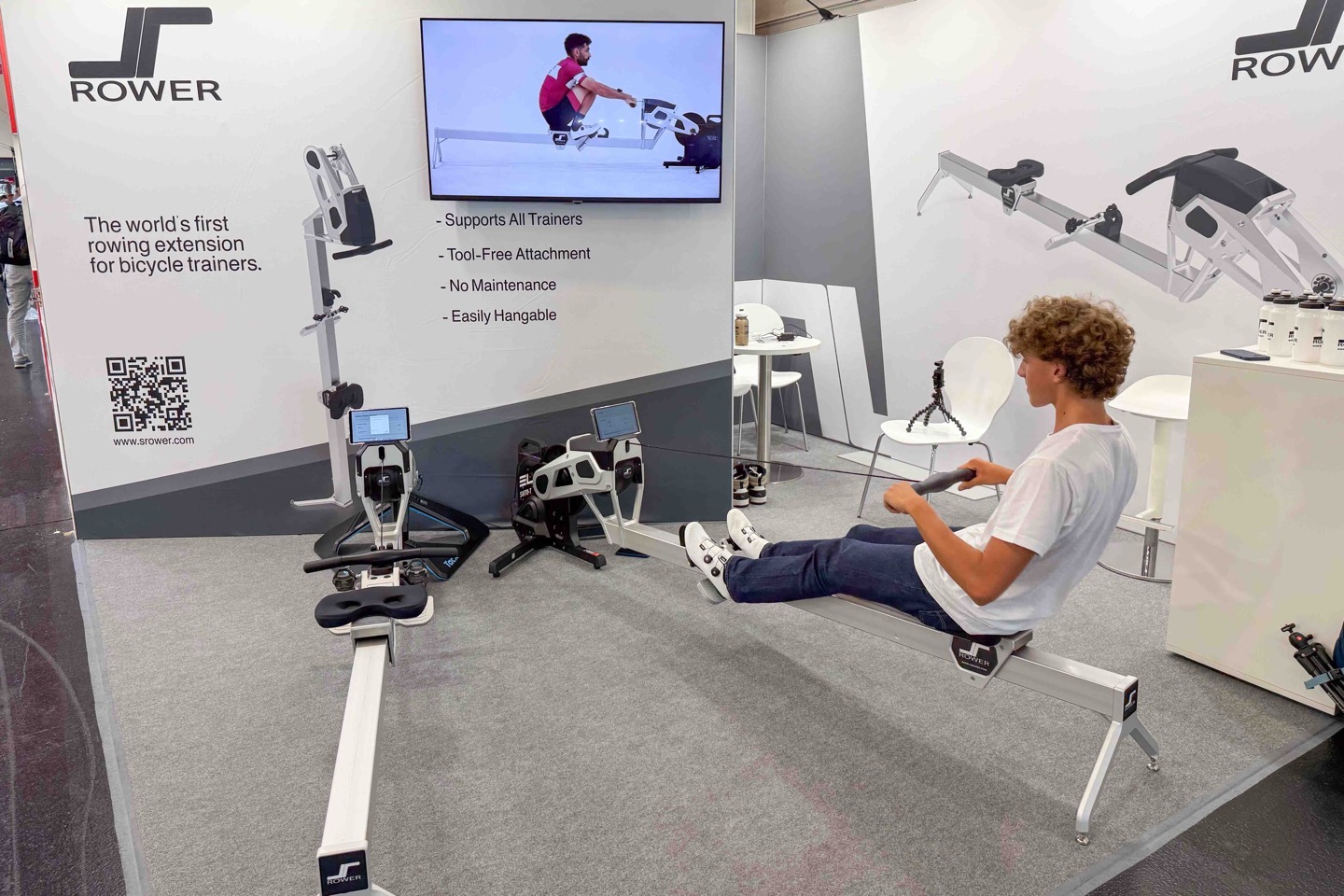
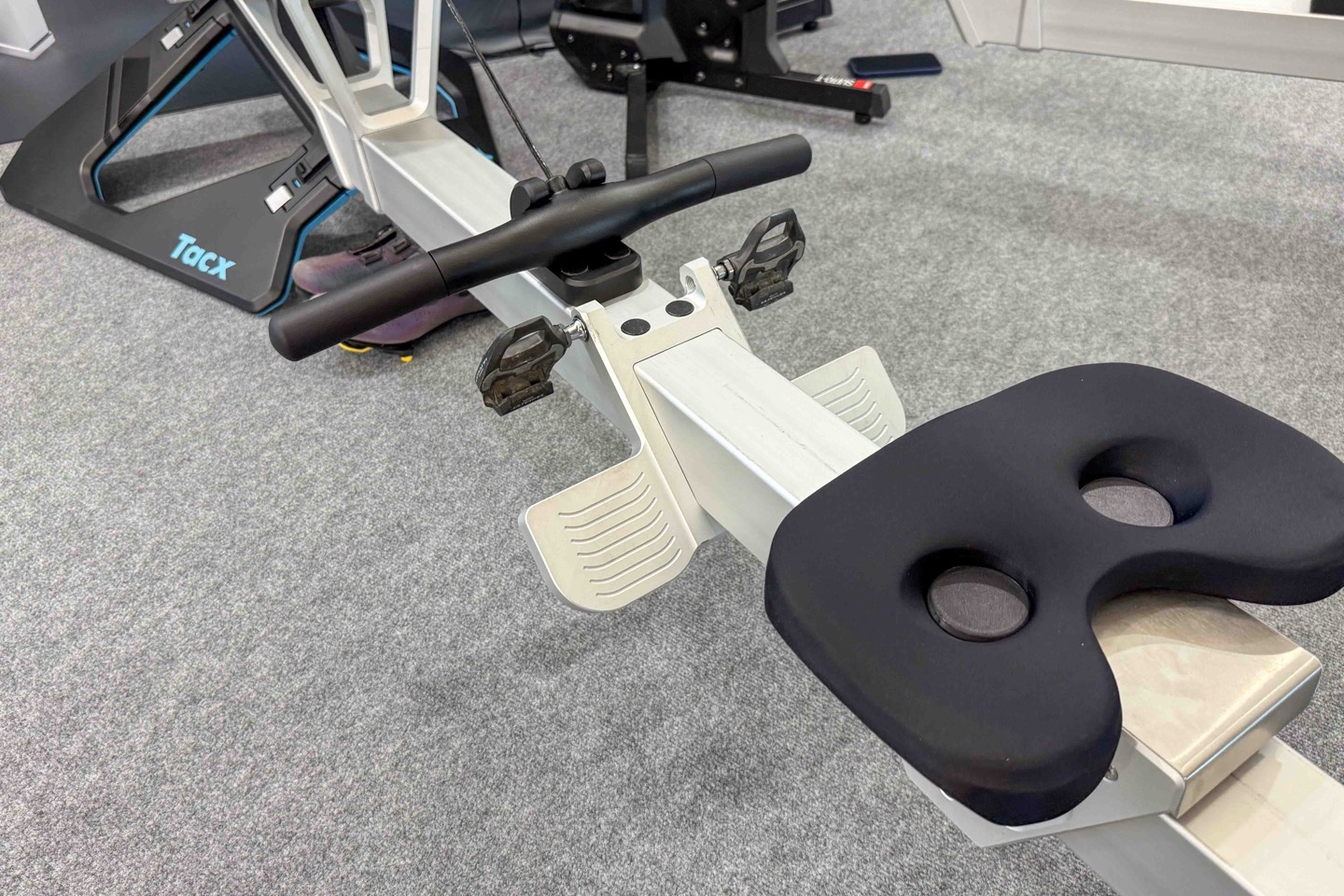
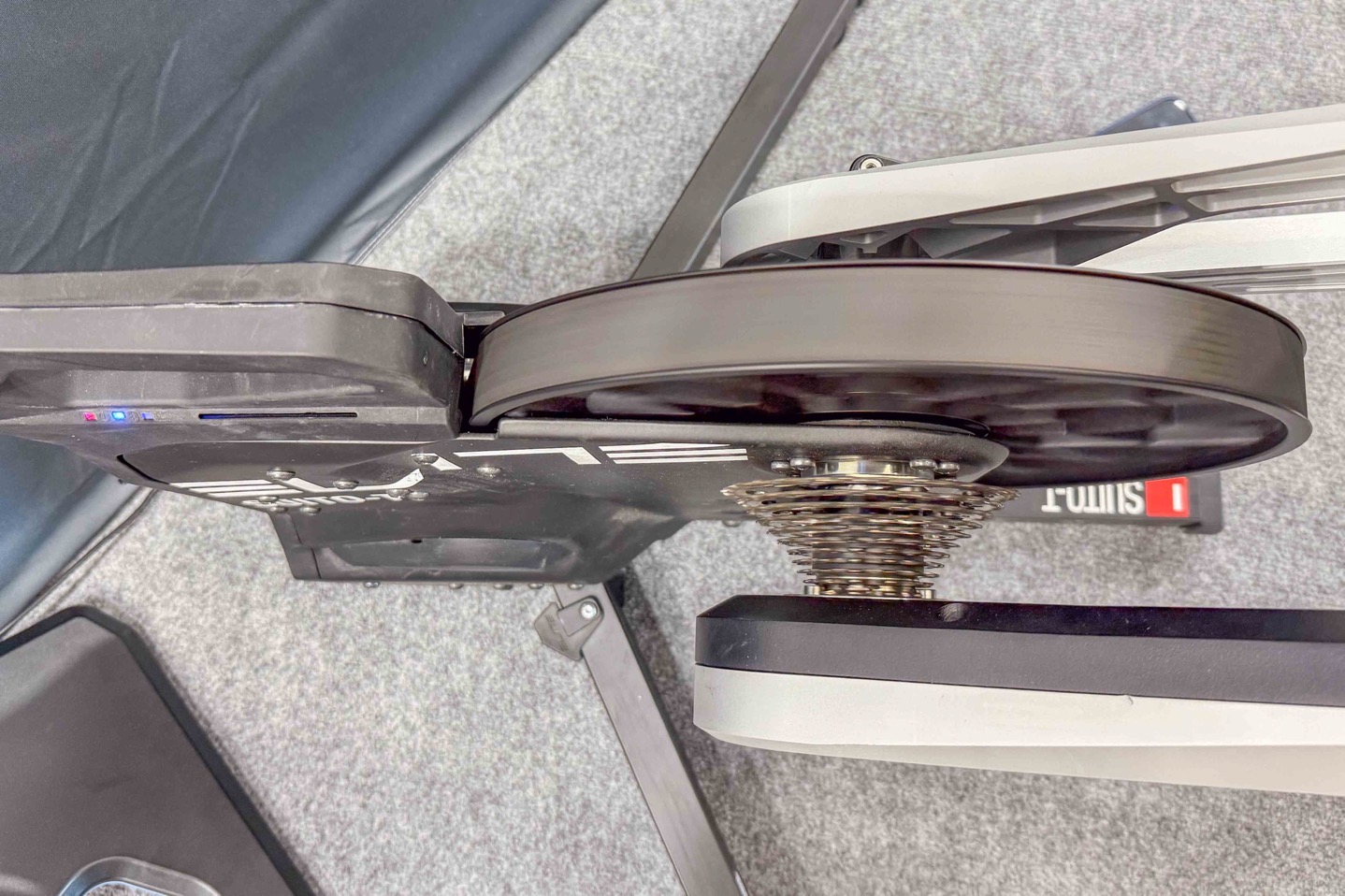
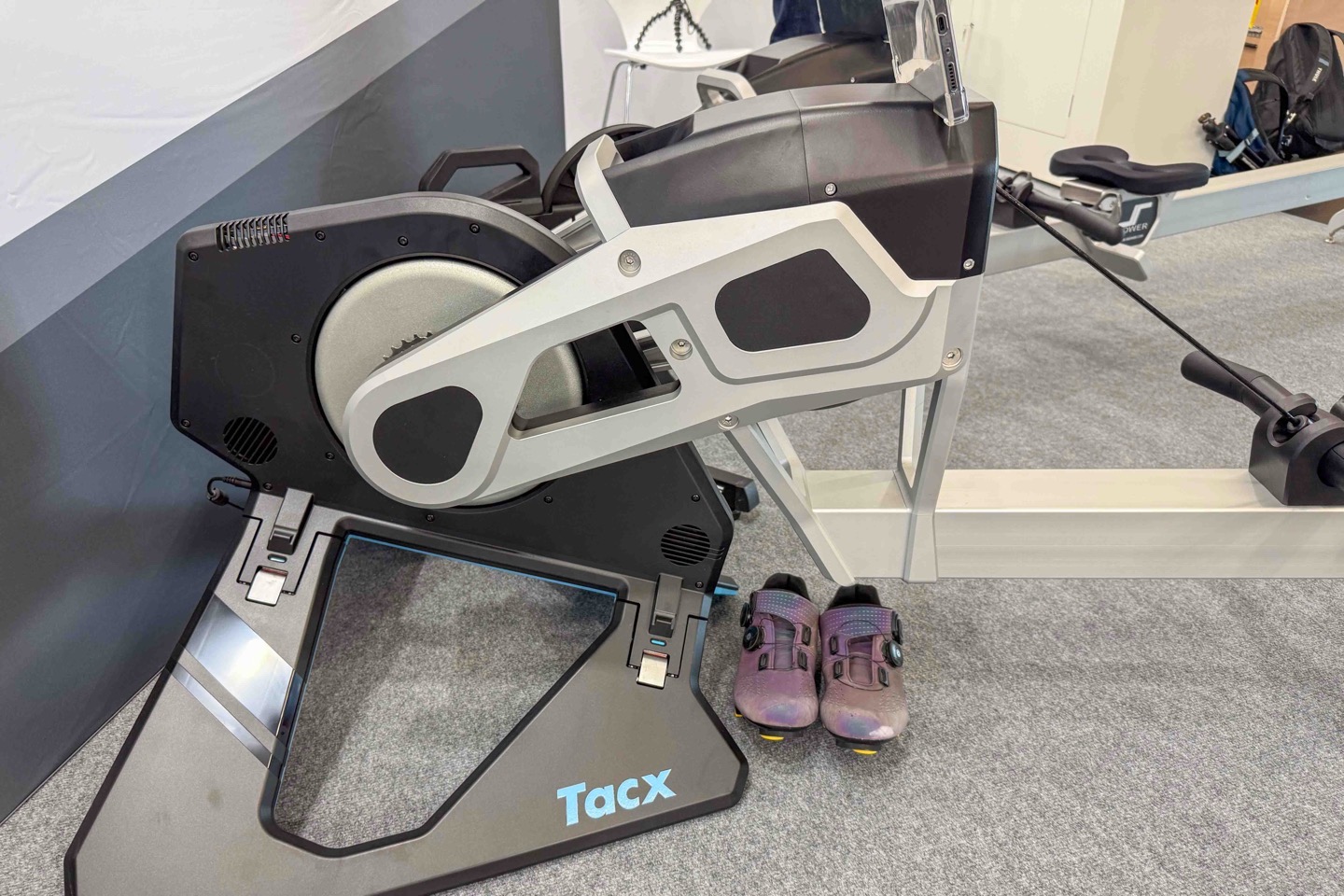
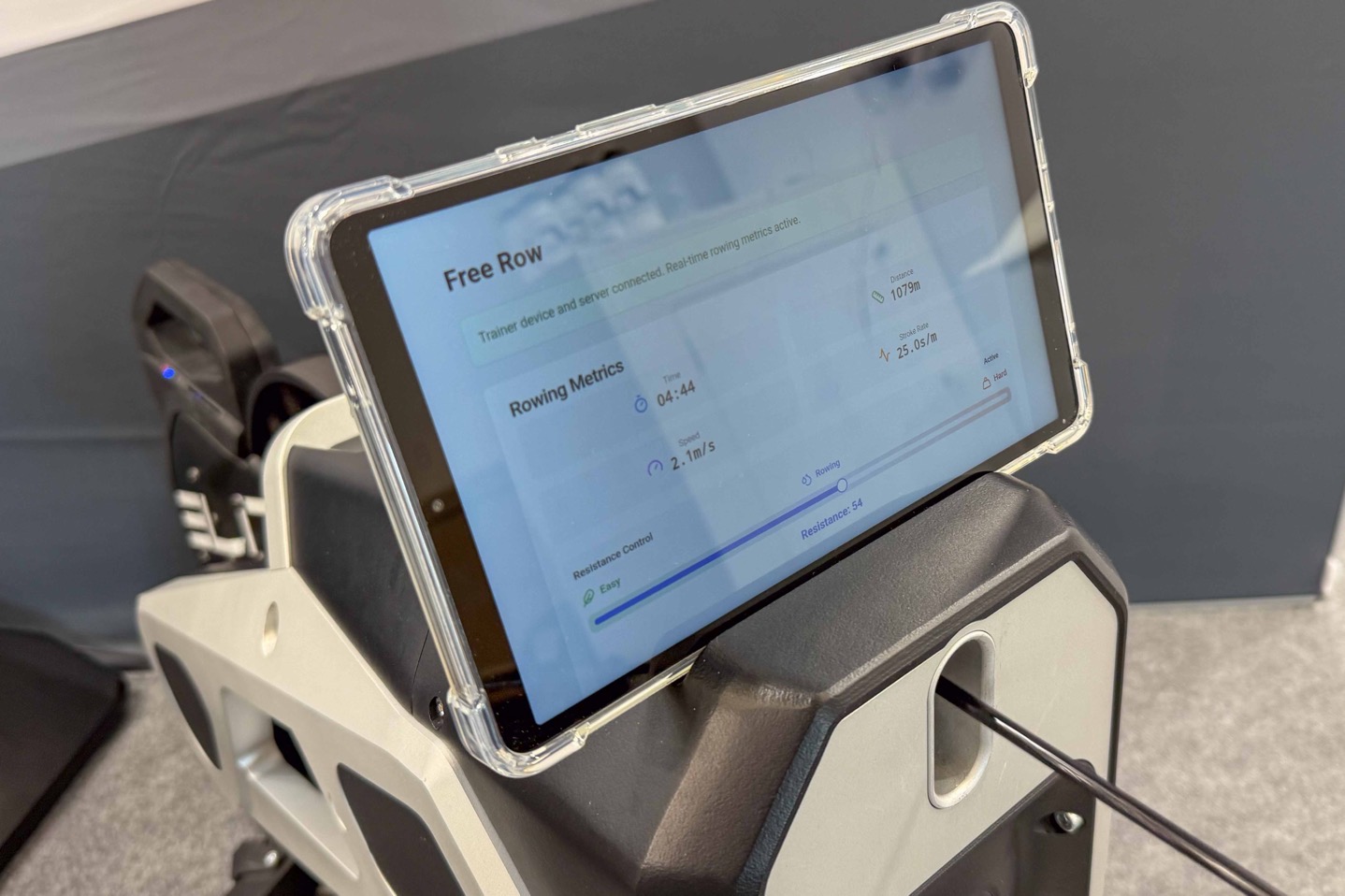
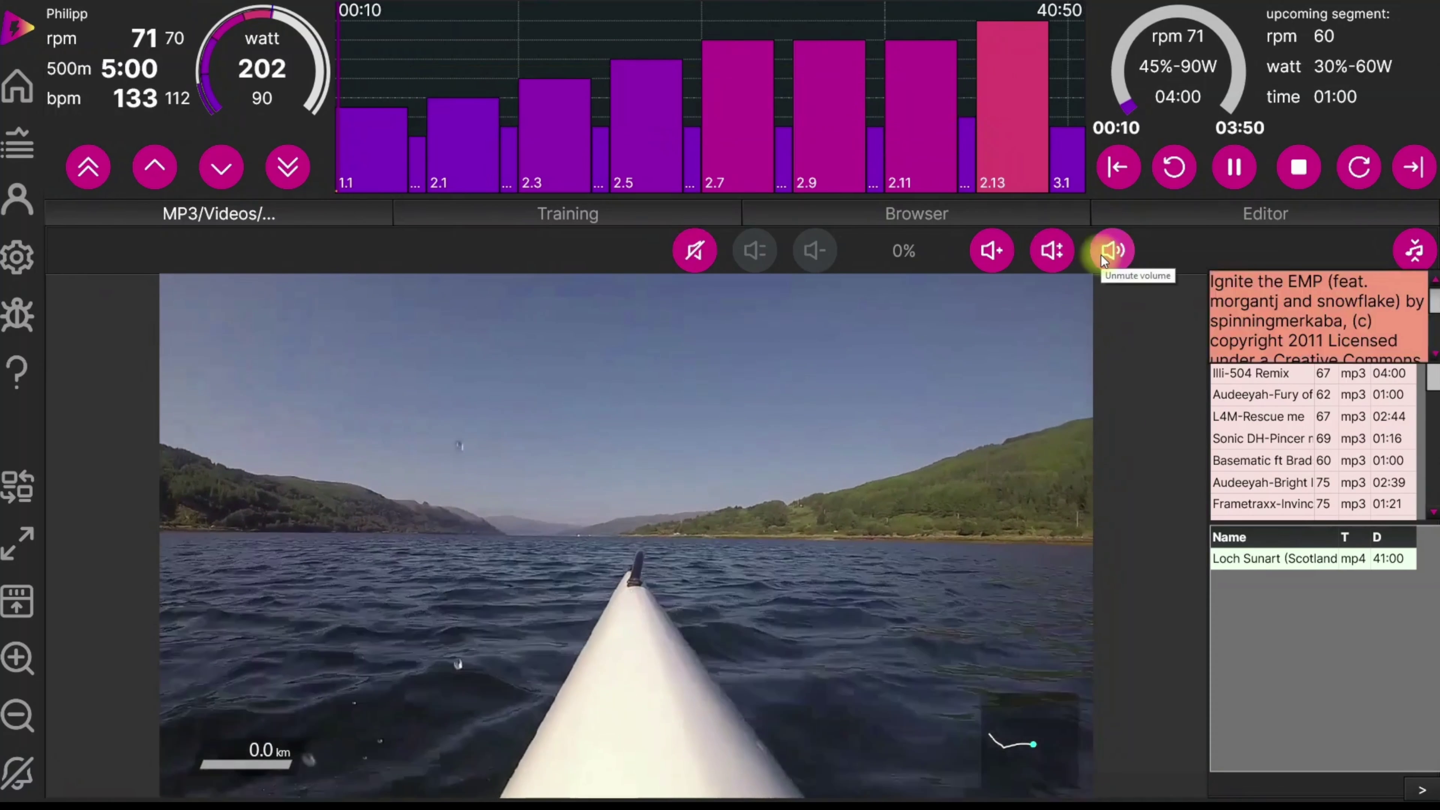









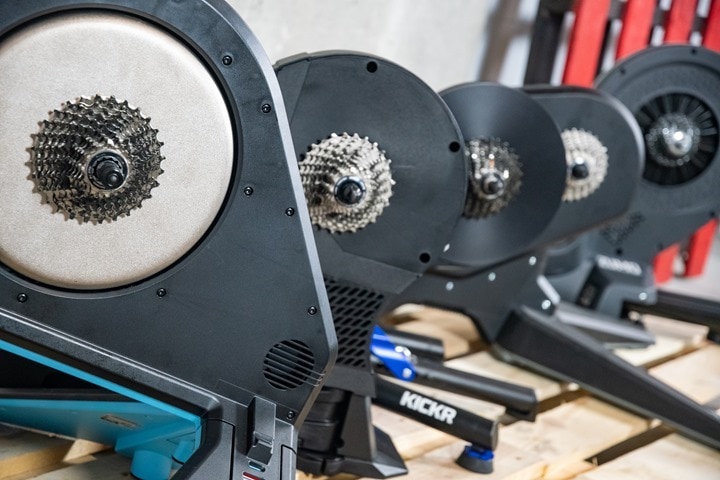

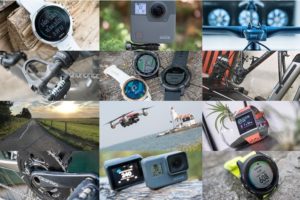
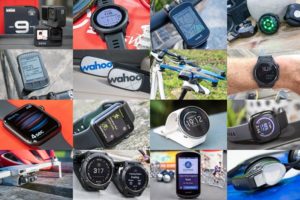



Count me as interested
This looks like a brilliant idea! Hope they can deliver.
Also, I like that the guy on the video is rowing with road bike shoes :D
Fantastic idea, but rather expensive for what your getting
I would argue that depends on how you look at it. When I read it – I see I do not need to store a full size rower as a concept 2 but I get the functionality of a rowing machine at a substantially lower price. So for me it looks like the value I could vs price is a bargin. If you are a cost + pricing guy, I can understand you might think it is expensive.
You would still need to store this though right? For $300 more you get the gold standard that everyone accepts times for. I guess if you’re just a fitness dude who wants to row, and doesn’t care about comparing your times to others, it may make sense.
I don’t understand why bike pedals? Clearly you can’t do fast bike row transitions (not that I can ever think I’d want to), but when rowing I want a solid flat platform to push against with toe straps. Seems that they made this more complicated than it needed to be.
Otherwise I can imagine this being really really good for a very small number of people. It’s the Venn diagram intercept of people in the upper 5% of cyclists that have a smart trainer AND gym rats And non-competitive rowers (who would want/need the concept 2). Don’t get me wrong, I’d class myself in that, and I have a ‘spare’ smart trainer so if it had been available where I am then I’d drop the $520 today, but it’s going to need a lot of ‘free’ publicity to reach the potential buyers as the return on traditional advertising for awareness is going to be too low given the breadth they would need to go.
I’m not sure I entirely understand the bike pedal choice either, but I’ll swing back by tomorrow and ask why specifically.
As for the overlap, I think it’s greater than one might think. I was surprised at the number of people on the floor that were super excited about this, that had mentioned seeing it to me. Obviously, everyone on the floor is a cyclist (and an industry cyclist at this point, since open day isn’t till Sat/Sun).
Loving the concept but the pedals are potentially hugely illogical…
Shimano does/did offer a Shimano Rowing Dynamics based on their cycling stuff for on boats (so you can take your own shoes rather than using fixed ones). So no issues with that.
However, this misses the point that adjusting feet/shoe height is critical dependant on the size of flexibility of a rower to enable the correct posture and prevent serious injury. If they can’t adjust the height it’d be akin to a single saddle height on a bike…
The C2 strap and trainer style just makes life easier on an erg that multiple people use and don’t always want specific shoes for and can quickly be adjusted
Will definitely keep an eye on this though
As someone who uses a Concept 2 at a gym somewhat regularly (and listens/watches to the Concept 2 podcasts and learning videos), but has never had formal rower training, pedals make total sense:
a) the foot straps always loosen up — this may be because of bad technique on my side: bracing with the heels against the strap when recovering (i.e., pulling the slide forwards), but the strap is the only thing to pull against during recovery
b) despite wearing Nike Superrep Surge shoes that have special adaptations for rowing machines (a ledge on the heel to fit into the C2 foot stretchers and a reinforced band in across the bridge of the foot where the straps go), the upper is ripping at the sole in the strap’s location.
In fact Exustar makes Look Delta/SPD compatible pedals just for rowing (link to exustar.com).
Never seen those exustar ones… Interesting…
From a performance perspective 100% agreeagree the pedal would be a great way of doing it.
The issue as I say is feet height – fixed too high it risks serious back injury if you aren’t flexible enough, too low it’s inefficient. If they have a practical solution to this I’m right on board!
Only other thought is if different turbo units have a different height for the rear axle + front riser unit they’d need to ensure the rail supports are adjustable (engineering me just getting excited and thinking through the problem)
The guideline for C2 is to adjust the foot strechers so as to keep the balls of the foot underneath the strap. This is automatically given when the pedal axis are mounted at the same height as the strap. For fine tuning, you still have the ability to move the cleat’s position in relationship to the shoe, obviously this requires a hex screw driver and is not something you would want to every time.
However, actually mounting the pedals will require drilling into the rower, since they are not designed for pedals.
Hi Konrad, there’s a hack to stop them doing that (coming loose).
Instead of pulling the straps up as you would normally do, leave them a fraction loose and them point them down through the BOTTOM of the buckle. Then you can fiddle around with getting them appropriately tight for your feet. They will not come loose after this.
With regards to needing to use the straps to pull you forward, that should solve the problem, but there’s a drill that you can use so you don’t need to do so much of it (you’re going to get really tight hip flexors).
Simply, try rowing without the footstraps tight. You’ll find that to not fall off the back, you will need to smooth your finish and recovery, and nail the sequence on the way forward. That way you can use the incline on the rail and the resistance of the bungee to draw you forward.
Sorry for the diversion from the general discussion – I’m in the throes of editing an erg instructor course (it is much better explained and less prolix than the above).
Just as an update here, I did check with the S Rower folks, and they plan to offer regular flat/strap options too, akin to Concep 2.
I think bike pedals are not the worst idea: you clip in with your cycling shoes wich are stiff enough to push against, they are made for that. When clipped in, you can also pull yourself forward so you don’t rely on the strap. Also, bike shoes are most likely available when there is a smart trainer.
The price point is hard. For 1200€ I get a brand new C2 rowerg with an PM5. C2 sells competition rowers even cheaper after the competition. Those rowers can be split in two pieces in seconds and are state of the art in my opinion.
Ray, if you could try to connect any Garmin watch with the indoor rowing app, that would be fine. I only know of the C2 PM5 computer wich they connect to. If this is working, than I would really be interested in it.
When a Garmin watch connects to the Concept2 PM5, it does so by ANT+ FE-C and to the best of my knowledge, there is no capability for a Garmin watch to connect to a rowing machine by Bluetooth FTMS.
I should specify that I mean in order to get rowing stats (pace/500m, power, cadence) into Garmin. If all one wants is to use the Garmin watch as a bluetooth HRM to get heart rate to the rowing machine, then that does not require ANT+ of course.
Im not shure wich protocol is used. But Garmin only started using it after Coros did it. For years it was asked for and not delivered, then some guy did a ConnectIQ app. After Coros brought it to watches Garmin also did.
I had access to PM3s wich used an even older ANT profile, this could be read with an antique Forerunner 80? I bought used only for that purpose.
Not supporting FTMS also has tradition with Garmin, they also don’t connect to Treadmills wich broadcast via FTMS (looking at you, Woodway).
I would be satisfied with reading the data (on both causes, running and rowing), controlling isn’t not necessary for me.
Cool idea, but… My Concept 2 has well over 6 million meters on her and has not required anything more than routine maintenance. In my opinion, the slide (beam part) is going have to stay one piece for strength and smoothness.
I can’t see just having one trainer and moving switching out this with your bike.
The main issue with this concept is the resistance. With a Concept2, there’s a “drag factor” that simulates a type of boat, and one might consider this an “initial level” of resistance, but real resistance is *interactive* with the effort put in by the person rowing. That is, the more force one puts on the drive, the more air goes through the fans and it creates a heavier feel. Most experienced people do not set a high drag factor (controlled by a damper setting dial) as it doesn’t well reflect outdoor rowing.
link to concept2.com
This interactive quality is possible with air-resistance and water-resistance machines (e.g. a WaterRower), but typically is not done well with magnetic resistance, and when companies selling cheap rowers advertise “resistance levels” it’s a red flag; during a rowing session, a Concept2 user would not change drag factor like they would resistance levels on a spin bike.
On the other hand, when following a structured workout with power and cadence targets (say 160w @ 24spm for five minutes, then 200w @ 26spm for two minutes), there’s no concept of an ERG mode for a Concept2; it’s up to the person rowing to maintain the proper force on the drive and adjust recovery to achieve the power and cadence targets. Also many people will use pace/500m targets as on a C2, which is fine as a specific pace always corresponds to a specific watt value, e.g. 200w = 2:00/500m.
link to concept2.com
So I’m curious how this project’s adjustable resistance will work out and if the power values will be accurate. The “power meter” for rowing is SmartRow, which has had a version for WaterRower for some time but recently came out with a power meter for certain other machines including C2.
link to smartrow.fit
One thing to keep in mind is that smart trainers figured out inertia a long time ago as well.
Remember, 50 years ago, smart trainers included wind-based ones: link to dcrainmaker.com
More recently (a few decades ago), we saw Wattbike shift that into smart bikes.
12-15 years ago, we saw Lemond do that too with smart-ish indoor trainers (but were too late to the show): link to dcrainmaker.com
Then, that period from roughly 1990’s till 2010, we had all assortment of magnetic & fluid trainers.
But about 15 years ago, we shifted to much better flywheel driven intertial systems, that cyclists are really happy with in terms of replicating the road feel and inertia.
Whether or not rowers feel like this does a good job remains to be seen. But I would definitely seperate out previous attempts by companies that don’t have experiance with really good inertia systems, compared to what cycling smart trainers do today (which are incredibly advanced technologically in comparison).
The cycling analogy that comes to mind I is the Concept2 BikeErg which uses air powered resistance, and similar things like the Assault Bike. One can certainly get a good workout on those but I think they are uncommon setups for people on Zwift, etc. It may be this setup is fine for rowing, but I can also see where it may be problematic to take a trainer designed for cycling and make it have the right feel for rowing. The audience though seems to be cyclists who may be curious about crosstraining and not necessarily going after people who know rowing already.
It also seems it would be a hassle to switch a trainer from the cycle to this for the rowing element if one wants to row some days and cycle others. A Concept2 is easy to break apart and hide away when not in use if one does not want to dedicate constant floor space for it, a WaterRower can be moved to a vertical orientation and moved away, etc.
The Zwift equivalent for rowing is arguably EXR; let’s see if they add support for it, and how well it works there.
link to exrgame.com
But even Hydrow failed in its attempt to a pure magnetic resistance machine, where they dynamically adjusted resistance 240 times per second. They needed to do that to match resistance with specific muscle activation in the stroke, and to resembling that water feel. In theory they should have been able to load any profile on that machine they desired, simulating a boat, oar or excercise of their chosing. They’ve become nice looking machines, but the true feeling isn’t in there as the flywheel resistance is too slow to react to speed changes.
And this is where this whole setup misses the point. Bike trainers are designed to simulate a bike: stable rolling resistance forces that might change due to inclination. Rowing machines are designed to handle a constantly changing speed with variable dragforce as a result. Actually a totally different part of physics at play here with a much more complex muscle activation pattern, thus requiring a different machine to simulate it. And so far, analoge approaches still outperform much complexer digital ones.
Interesting machine when it comes to dual using a smart trainer.
I second the thought of many failed attempts to solve inertia on rowing machines. I tested a few: Waterrower, Concept2, Biorower, RP3, Rogue, Nordictrack, Decathlon rowers. There are also some hybrid machines where different resistance types are being combined.
The real crux of the matter may lie in rowing. There is now a large movement of indoor rowers who have little or nothing to do with rowing on the water. For example, they first got into rowing through Crossfit or Hyrox – these people don’t really care what rowing on the water feels like and whether the equipment in the studio or at home imitates this feeling. May be difficult to imagine that in cycling ;-)
One thing about the belt-drive: To me it looks quite thin, so even when there might be metal inside there are forces acting. To my knowledge there are not many rowing machines with belt drives, Augletics uses those, but they are thicker and wider.
When it comes to simulating the true rowing motion, not many really succeed. By far the biggest issue is the lack of upper body dynamics and that most ergs have the person moving up and down (requiring an unaccounted 50W), instead of the head.
However, the drag/inertia balance is closely related to the biomechanics of the rowing motion. Within the stroke, the most power is generated in the middle (as both legs and hips are engaged). Huge muscles which are also in a good position to excert strong forces. It is this biomechanics that drives the design of both rigging in real boats and the need for dynamic resistance in ergs. So the flywheel/impellor drag is needed because of the biomechanics of the rowing movement dictates it.
The biomechanics is also the reason why magnetic rowers are at the bottom of the list. Their drag is a constant force within the stroke (a Hydrow excluded) and doesn’t adapt to speed changes (unlike a flywheel/impellor). So either the resistance is way too high at the start of the stroke when muscles are weak, or it is way too low in the middle of the stroke when muscles are strong. The first one can lead to serious back injury, especially when technique is bad. The second is just frustrating. But given the average gym goer setting drag to maximum, the first scenario is most likely.
So where a Concept2 BikeErg never made much sense from a cycling perspective, this doesn’t make much sense from a rowing perspective. Not because it doesn’t simulate the rowing motion, but because of its total disregard of the biomechanics.
This is clever! At $600 that beats the Concept2 and the adaptability is nice. Pair it with the Regatta Fitness rowing machine app (Bluetooth FTMS compatible) and you get a smart rower all in one.
Or even a used C2 for about the same price — they’re built like tanks and last forever. I have a 30 year old Model C that’s still going strong. I’ve upgraded the old wooden handle to the plastic one, replaced the foot straps, upgraded to a PM5 and added the tablet holder. Still going strong. There’s a reason that rowing clubs and national rowing teams the world over train on C2s.
I have to admit, this had me intrigued for a moment.
Then I remembered that I’ve sold my Kickr Core and replaced it with a Kickr Rollr.
Guess this isn’t for me, then.
I’m laughing, mind, and the honest truth is I probably wouldn’t buy it anyway – rowing isn’t particularly closely aligned with my general goals. For those where it does fit in, it looks very interesting, and it’s a clever take. I wish them luck.
If I’m going to consider spending $700 for one of these, I’d rather just spend $1000 and get a Concept2 RowErg, a tried and true indoor rower that can be used by novices to elite rowers. It has a great feel to it, too; I’ve used other indoor trainers and they don’t compare in rowing feel to the Concept2. It’s the gold standard in indoor rowers; extremely well built and reliable; great customer support; and a great community.
It also holds its value better than any other exercise equipment I’ve owned. When I moved, I sold my 10 year old Concept2 for $100 less than I paid for it.
I’m not going to monkey around attaching and detaching this from my smart trainer. I’d just fold down my Concept2 that I stored vertically.
I guess from a certain perspective this makes sense. Use the resistance device from a smart trainer for other uses. Similar to how Concept2 uses their resistance device, a rotating fan, for other products: SkiErg, BikeErg, and and now StrengthErg. For biking, though, I’d rather just use my smart trainer — it’s specialized and perfected for that use and has a great feel.
But if there’s demand for this device, that’s great – different strokes for different folks.
It’s a very curious idea, but it kinda requires you to have a spare trainer (because the whole “unclip the bike – move it out of the way – unfold the rower – clip the rower” process is going to get annoying). Not to mention storing this rower even with beam folded in half would be a hassle.
I have a Concept 2 sitting next to my smart trainer setup. I’m not sure if want to deal with moving my Kickr Core around (fastened to a rocker board) to row, bit damn, this is an awesome idea, I really hope it takes off.
Super cool idea, especially for fitness. From a rowing perspective, Concept2 is king. If you want to compare times or submit your results anywhere, they won’t accept anything but Concept2 as there is so much variability with rowers. Just using it for fitness, this is is a cool idea. $700 though, a Concept2 is $1000 and connects to all training software by FTMS as well.
One silly quirk of this is that if you’re riding a bike on a trainer, the trainer is behind you. If you’re on this thing, the trainer is in front of you. If you’ve got a pain cave with fans and a big screen, everything is now backwards. I almost wish they’d cable& pulley’d it around to have the trainer behind you, for this reason.
I’m also curious how often people take their bikes on and off wheel-off indoor trainers as it often looks like a fiddly hassle to me (one reason I got a Stagesbike.) Certainly trying any bi/triathlon training on this is going to require some work popping the bike off and putting the rower on. I wonder if between that and the above pain cave rearranging, that people willing to pay the price for this will just get a cheap used trainer to stick it on (not like you need fancy features) and leave their main trainer for their bike.
All in all this looks really cool, though. I’m not entirely sold on it vs the C2 standard but it’s a neat concept.
Awesome. As the concept 2 rowing machines take quite some place, its great to be able to combine an rowing ergometer with a smart bike trainer. Did they indicate compatibility with the wahoo smart trainers?
Sounds like a great way to use an older trainer. Switching back and forth from bike to rower could get to be a pain.
I already have an old Concept2 – worth upgrading the performance unit to PM5 so I could connect to my Garmin, the Concept app.
Was interested in pre-ordering, but the US$ price leaves me with a few questions (can I order from Europe? what is the Euro price? does the price include shipping? VAT?) and the only contact info is for partnering with them :/
And kinda agree with comments here that for $700 one may prefer the C2, it being the industry benchmark.
Now make an under desk pedal stand